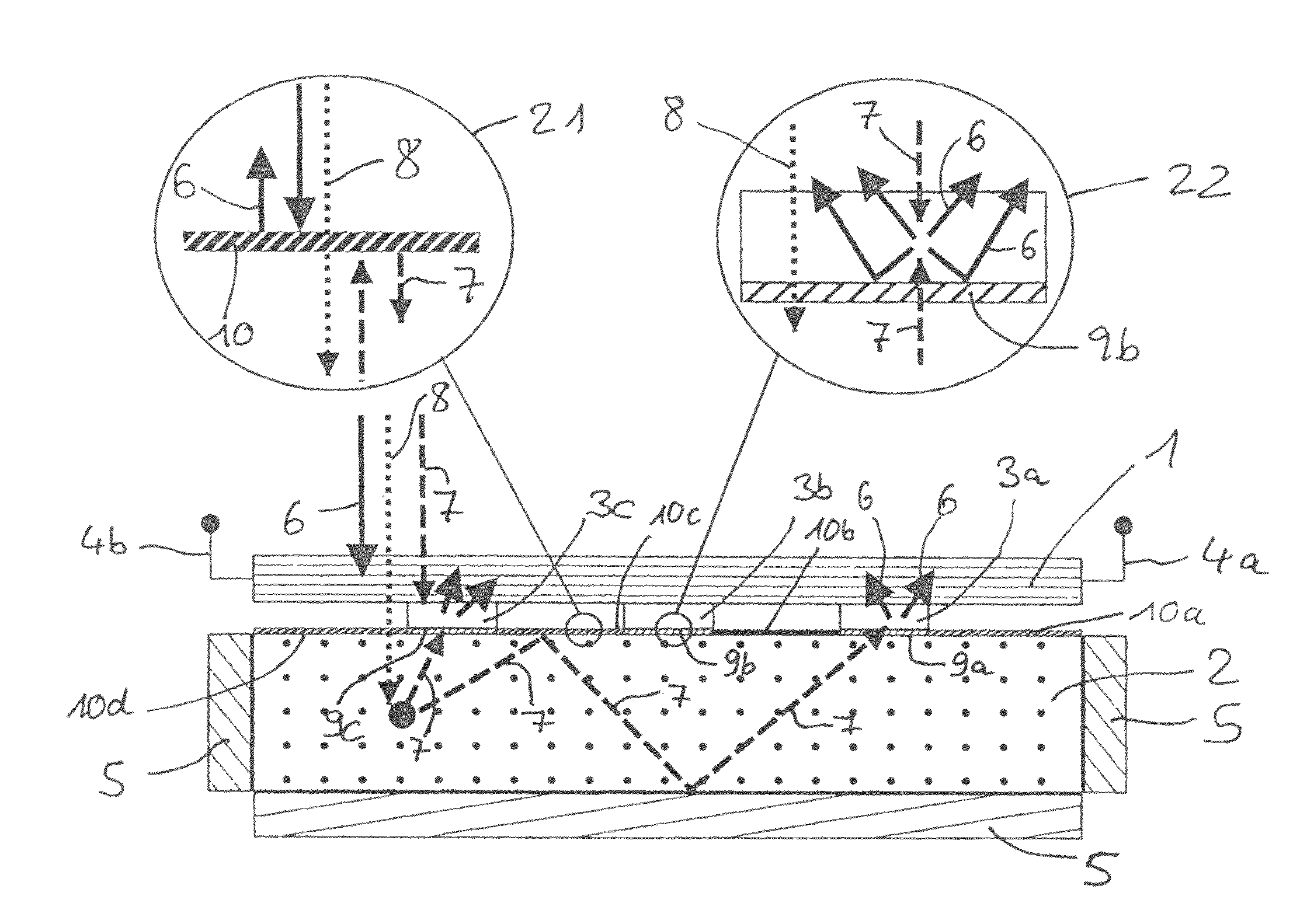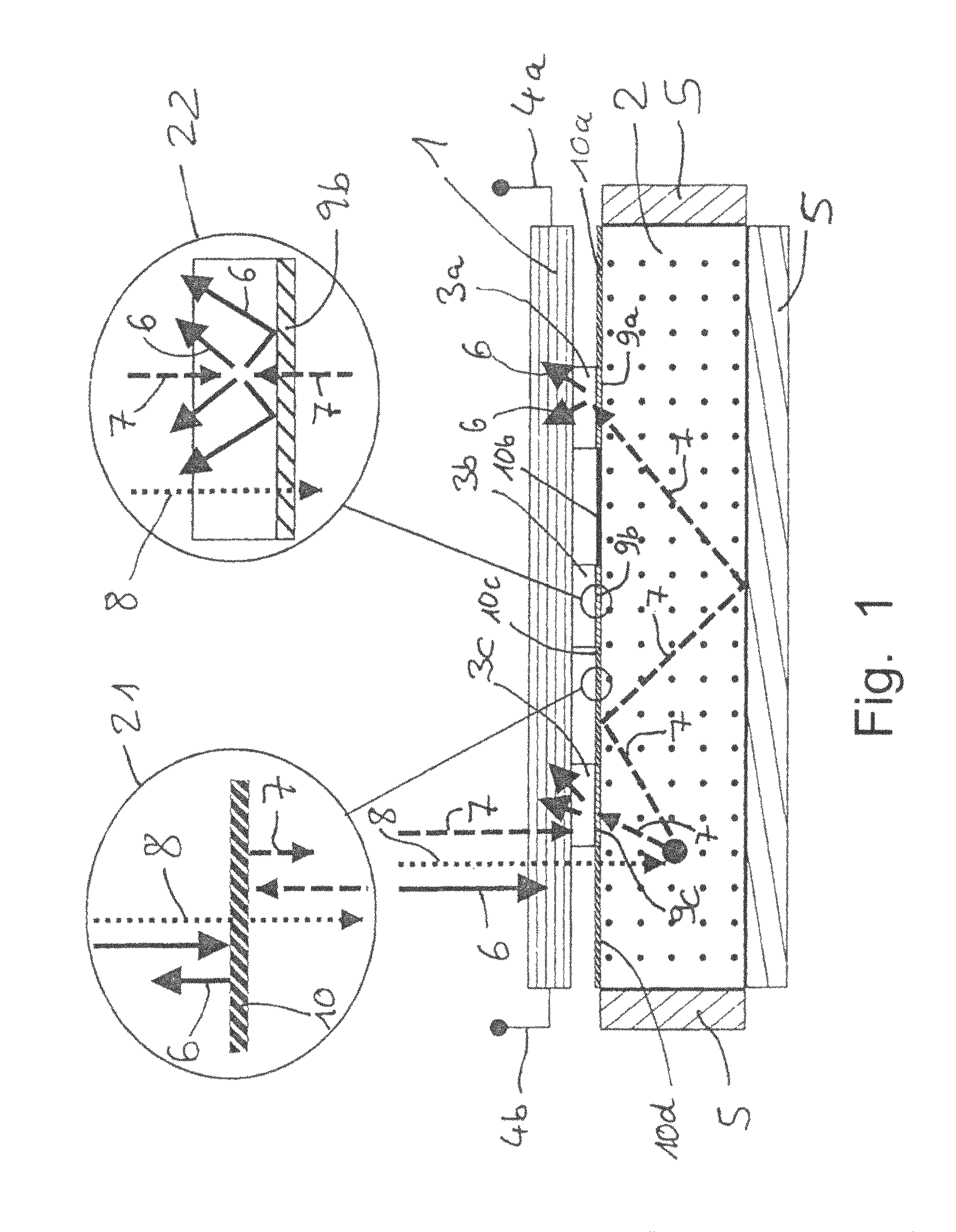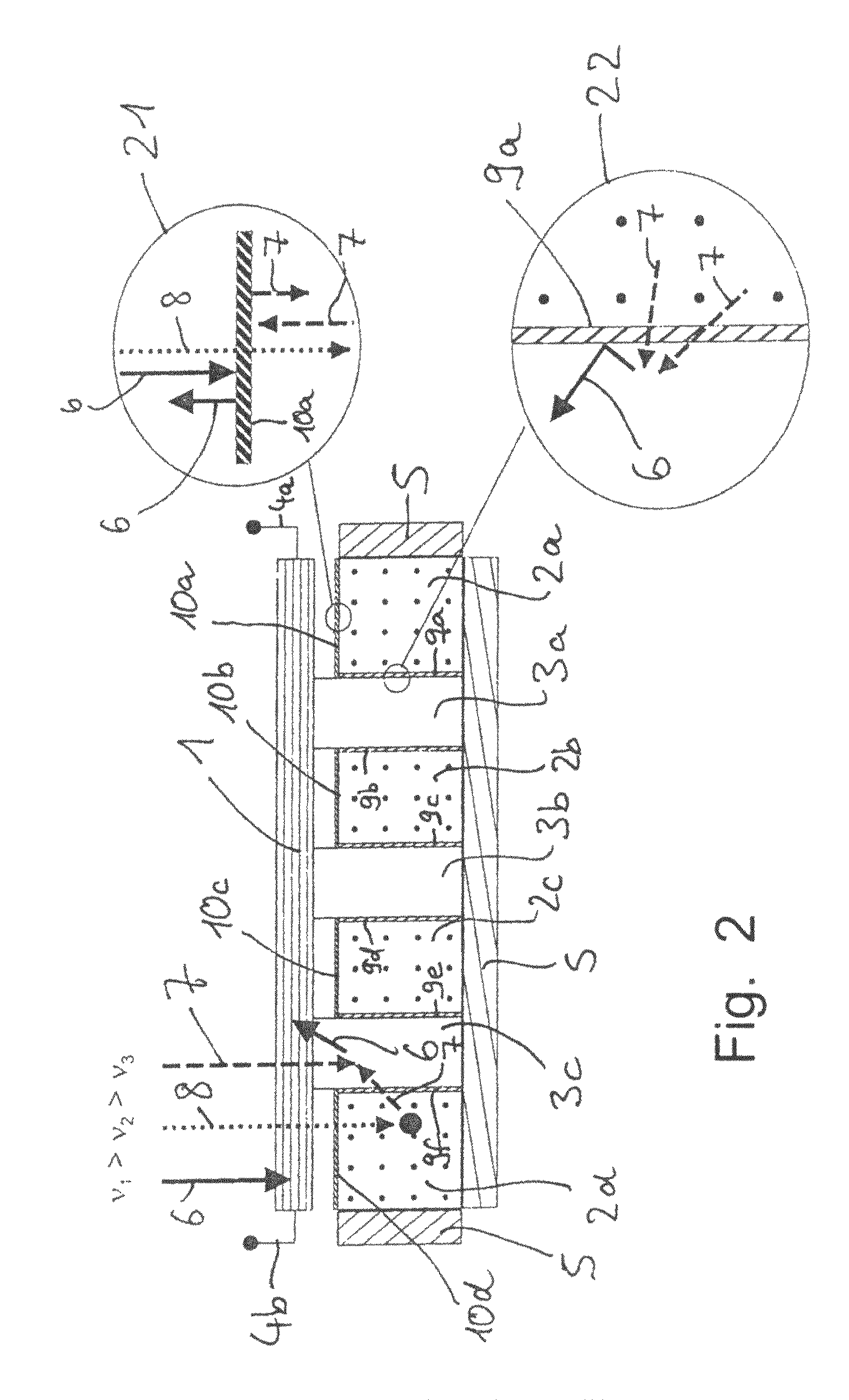Solar element with increased efficiency and method for increasing efficiency
- Summary
- Abstract
- Description
- Claims
- Application Information
AI Technical Summary
Benefits of technology
Problems solved by technology
Method used
Image
Examples
Embodiment Construction
[0037]FIG. 1 shows a possible embodiment of the present invention. A cuboid luminescent element 2 is hereby provided on five sides with mirrors 5. A solar cell is disposed next to the sixth side of the luminescent element 2 which is not provided with mirrors 5 with a plane parallel to this side. Between the solar cell 1 and the side of the luminescent material 2 not provided with mirrors, upconverters 3a, 3b and 3c are disposed. These upconverters touch the solar cell 1 directly. Between the luminescent element 2 and the upconverters 3a, 3b and 3c, respectively one first selectively reflecting layer 9a, 9b and 9c is disposed.
[0038]Section 22 shows the permeability of the first selectively reflecting layer 9b. Radiation 6, the frequency of which is above the band gap frequency vBG of the solar cell 1, is reflected from the selectively reflecting layer 9b. Radiation 8, which is absorbed by the luminescent material, i.e. has a frequency between vLE1 and vLE2, is transmitted from the se...
PUM
 Login to View More
Login to View More Abstract
Description
Claims
Application Information
 Login to View More
Login to View More - R&D
- Intellectual Property
- Life Sciences
- Materials
- Tech Scout
- Unparalleled Data Quality
- Higher Quality Content
- 60% Fewer Hallucinations
Browse by: Latest US Patents, China's latest patents, Technical Efficacy Thesaurus, Application Domain, Technology Topic, Popular Technical Reports.
© 2025 PatSnap. All rights reserved.Legal|Privacy policy|Modern Slavery Act Transparency Statement|Sitemap|About US| Contact US: help@patsnap.com



